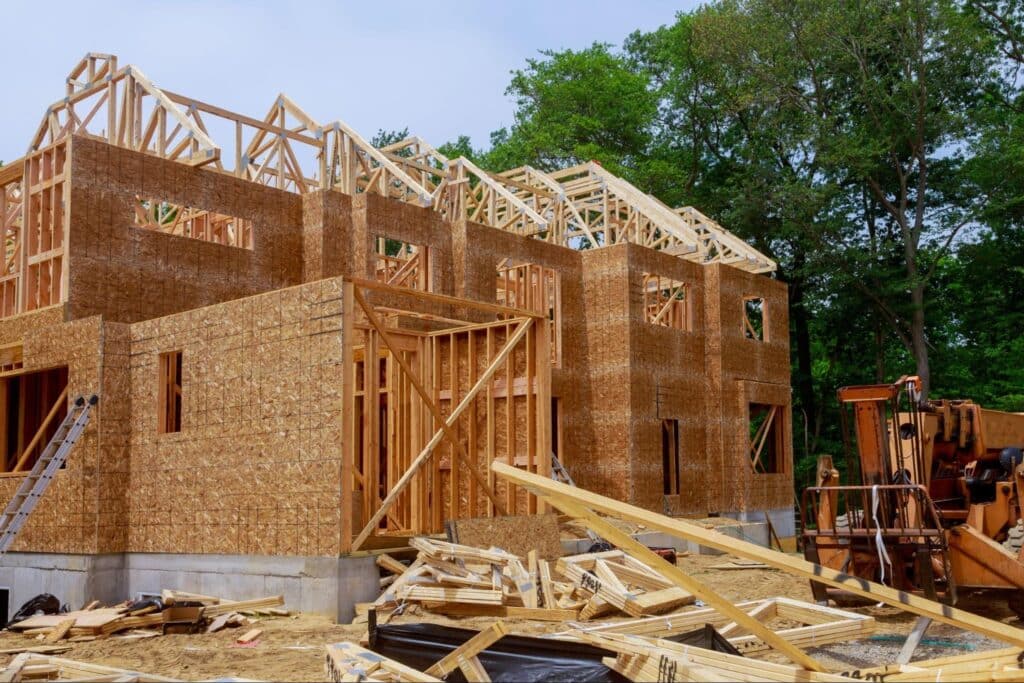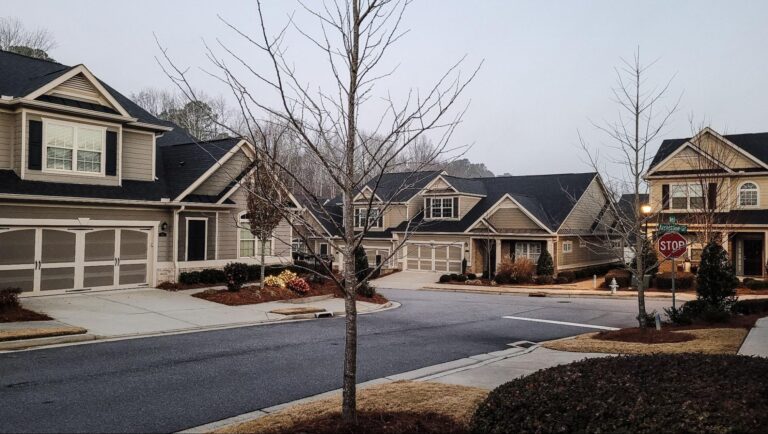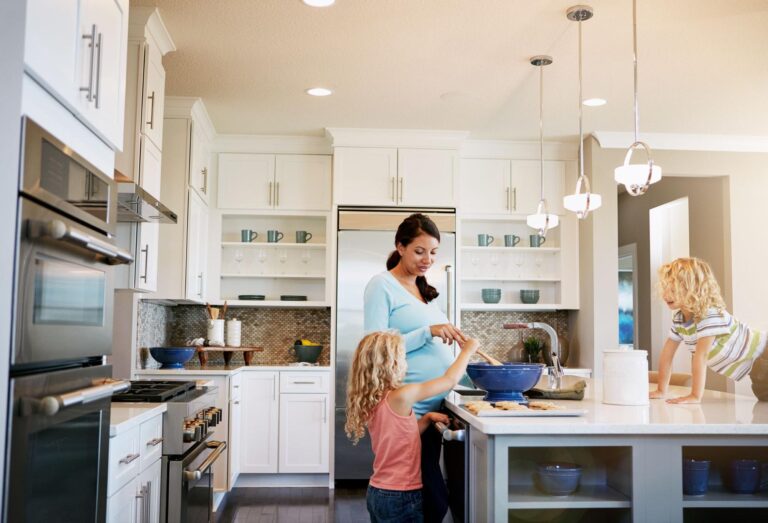Building a new home is often seen as a major life milestone. Yet, without the right plan, it can easily become overwhelming. From setting a realistic budget to navigating unique regional requirements, every detail matters. For prospective homebuyers in Indiana, understanding local regulations, land options, and reliable construction practices can help ensure a smooth journey. Below are must-know home building tips that will guide you toward a stress-free and successful project.
Start with a Realistic Budget and Financial Cushion
In Indiana—as in most states—home construction can quickly evolve in unforeseen ways if you don’t begin with a detailed budget. Before breaking ground, outline all expenses you might face, including permits, design fees, and site work. Take time to compare the costs of materials and labor in your specific region, as local market conditions can affect everything from lumber prices to excavation rates. Learn more about Indiana’s housing market data from the Indiana Housing and Community Development Authority to better understand potential cost variables.
Once you’ve decided on major items, set aside a contingency fund to handle unexpected surprises. A common guideline is to allocate between 5% and 15% of the total project cost for contingency purposes, though the exact percentage depends on project-specific risks and market conditions. This financial buffer can protect you from unexpected expenses, such as utility connections turning out costlier than anticipated. By planning ahead, you won’t be caught off guard by sudden costs.
For fixed-cost security, some builders use transparent pricing that breaks down each element of the project. This structure can help you plan precisely, ensuring no hidden add-ons come up mid-project. It’s worth requesting a detailed cost breakdown before signing any contracts to see if the proposed numbers align with your expectations.
Research and Select a Trusted Indiana Home Builder
Even a perfect budget can go awry in the hands of an unreliable builder. Conduct thorough research on contractors who specialize in Indiana’s housing market—and look for professionals experienced in site built homes to ensure everything is constructed on location. This often enhances customization and durability for long-term value. You can consult the National Association of Home Builders for additional guidance on best practices in home construction.
During your initial meetings, ask whether the builder has strong relationships with local inspectors and subcontractors. Smooth coordination can significantly reduce delays, especially in places where permit backlogs or seasonal weather conditions might cause slowdowns. Also, confirm they maintain a clear line of communication regarding timelines. A dependable builder offers transparent scheduling updates using tools, like Buildertrend, so you’ll know exactly when to expect foundation work or framing to begin.
To further evaluate their track record, consult client testimonials and quality-control methods. Builders who encourage on-site visits at each milestone demonstrate their confidence in workmanship and clarity.
Choose a Floor Plan That Matches Your Needs
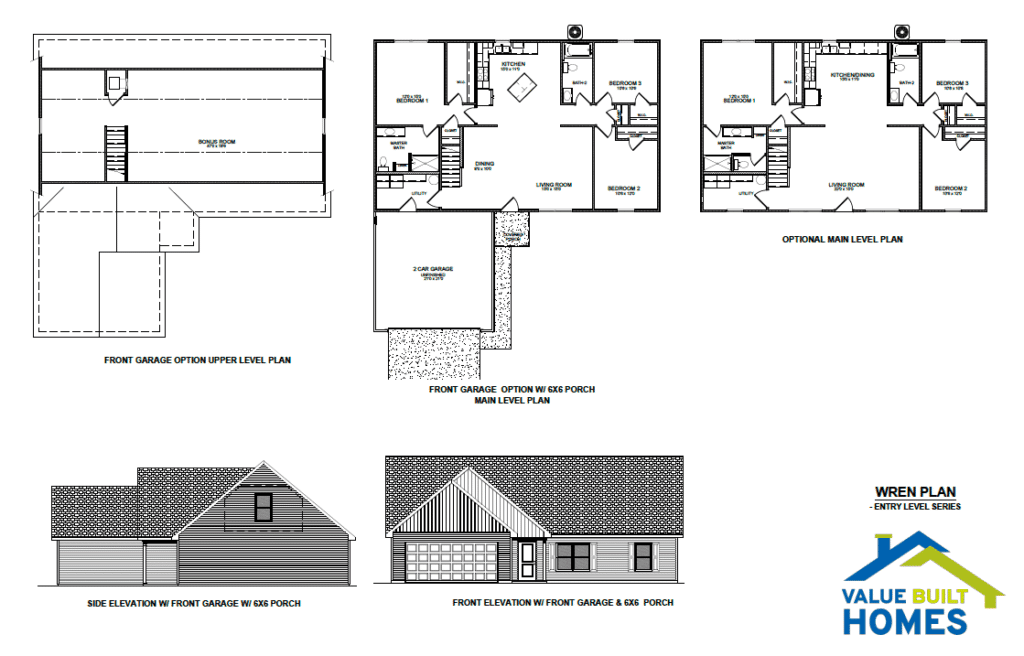
The floor plan is the heart of any home design, dictating how you’ll live every day. When evaluating a layout, consider how many bedrooms you need right now, as well as any future requirements. For example, if you live near Indianapolis but often host family from out of town, you might appreciate an additional guest room or a multi-purpose space. Similarly, open-concept kitchens might be ideal for entertaining, whereas closed-off rooms tend to favor privacy and noise control.
Some builders, such as Value Built Homes, offer simplified floor plans that limit decision fatigue. These plans feature core design elements known to work well for many families while still allowing for smaller customizations. A standardized approach speeds up the building process without compromising quality.
Secure the Right Location and Understand Local Regulations
In Indiana, location significantly influences both daily lifestyle and resale value. Some prefer the tranquil outskirts of Kokomo or Bedford, while others seek more established neighborhoods closer to city centers like Lafayette. When scouting land, consider factors such as topography, flood zones, proximity to schools, and overall connectivity. If you commute to work, look for areas near major highways or with reliable public transportation options.
Research local ordinances or use official zoning portals to confirm land suitability. For example, certain Indiana counties may have requirements about setbacks from roads or specific rules on septic systems. Make sure these regulations align with your building goals. Working with a builder familiar with statewide building codes and municipal guidelines can help you avoid expensive hurdles later on.
Additionally, think carefully about your surroundings. If you’re eyeing a rural property, ensure you have access to essential utilities like water, electricity, gas, and high-speed internet. That might influence how quickly you can start construction or whether you need special permits. A well-researched location choice sets the stage for a smooth and satisfying homebuilding experience.
Understand the Major Phases of Construction
Building a house typically follows a structured timeline: design, permits, site preparation, foundation work, framing, installing essential systems, and then finishing touches. Knowing what each phase entails allows you to plan more accurately around personal and financial obligations.
- Design and Permits: Work with your builder on finalizing floor plans and secure the necessary building permits from local authorities (such as county planning offices or city building departments).
- Site Preparation: This includes clearing trees, leveling the land, and preparing for utility lines.
- Foundation: The foundation sets your home’s structural integrity. Common methods in Indiana range from slab-on-grade to full basements, depending on soil conditions.
- Framing: Once the foundation is ready, framing gives shape to your home. Walls, floors, and the roof structure come together quickly at this stage.
- Systems Installation: Plumbing, electrical wiring, and HVAC ducts go in before walls are sealed.
- Final Touches: After drywall and flooring, you’ll see the kitchen, bathrooms, and other interior spaces take shape. Finishes like painting and setting fixtures conclude this phase.
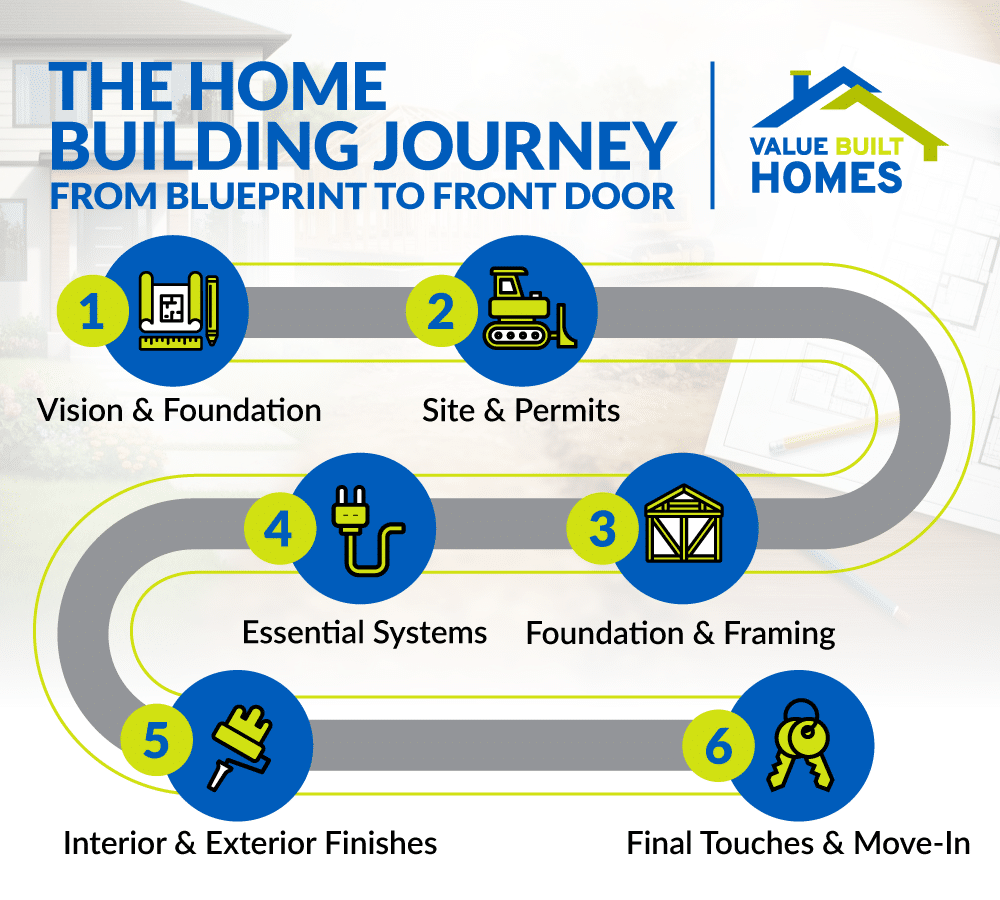
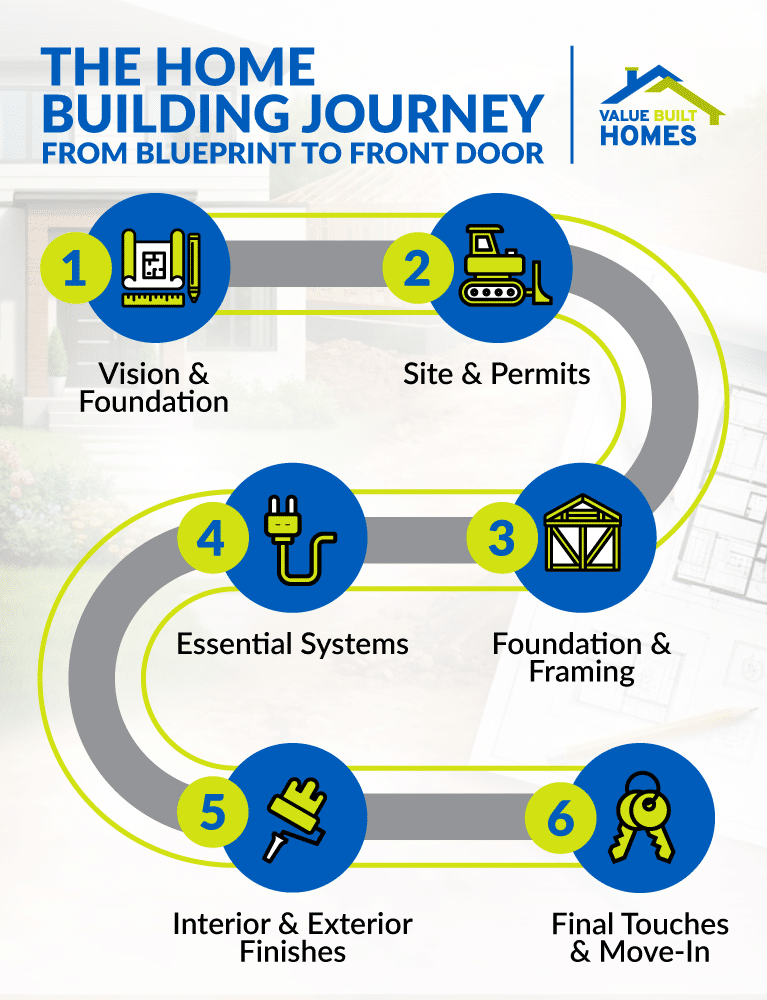
Simplify Decisions by Using Curated Options
Homebuilding can be exhilarating yet overwhelming because of the sheer number of possible choices—from cabinet styles to countertop materials. To avoid what experts call “decision fatigue,” work with a builder who offers standardized or curated option packages for major elements. For example, selecting from a limited yet high-quality set of flooring or paint colors can streamline the process, allowing you to focus on the larger design picture.
This approach doesn’t mean you lose flexibility. Rather, it ensures everything coordinates well and adheres to the builder’s proven quality standards. It also helps you avoid costly redesigns if a particular material doesn’t meet the necessary code or performance criteria. By minimizing endless back-and-forth decisions, you free up time to consider essential customizations that truly matter, such as an extra bedroom or a dedicated office.
Establish a Solid Communication Plan
Any home construction project involves multiple parties—from your builder and subcontractors to local inspectors. Without a clear communication framework, confusion can arise. Decide how you want updates (emails, phone calls, or scheduled in-person meetings) and how often you’d like them. A weekly or biweekly check-in can keep you informed about key milestones, shipment delays, or immediate approvals required.
In Indiana, certain real estate guidelines might require updated paperwork at specific stages, such as changes in land title or revised permit conditions. By having a proactive communication plan, you’ll know exactly when your input is needed. Coordinating with your builder on these administrative steps avoids red tape that might otherwise stall construction. Consider drafting a brief outline or schedule to share with all involved so everyone stays aligned.
Customize Wisely to Boost Usability and Value
Turning a house into a unique home often involves personalization. However, it’s essential to ensure that each customization provides functional or aesthetic value aligned with your lifestyle and budget. In Indiana’s diverse climate—ranging from humid summers to snowy winters—energy efficiency upgrades can be particularly important. Explore best practices from the U.S. Department of Energy to discover how to optimize insulation, lighting, and appliances for maximum energy savings.
If you foresee expanding your family or using your home for extended relatives visiting from out of town, consider flexible areas that can convert from a den to a guest bedroom. For individuals working from home, creating a well-lit office can significantly enhance daily productivity. Bear in mind that well-chosen customizations can also raise your home’s market value over time, a substantial advantage if you ever decide to sell.
Stay Active During Inspections and Key Home Building Milestones
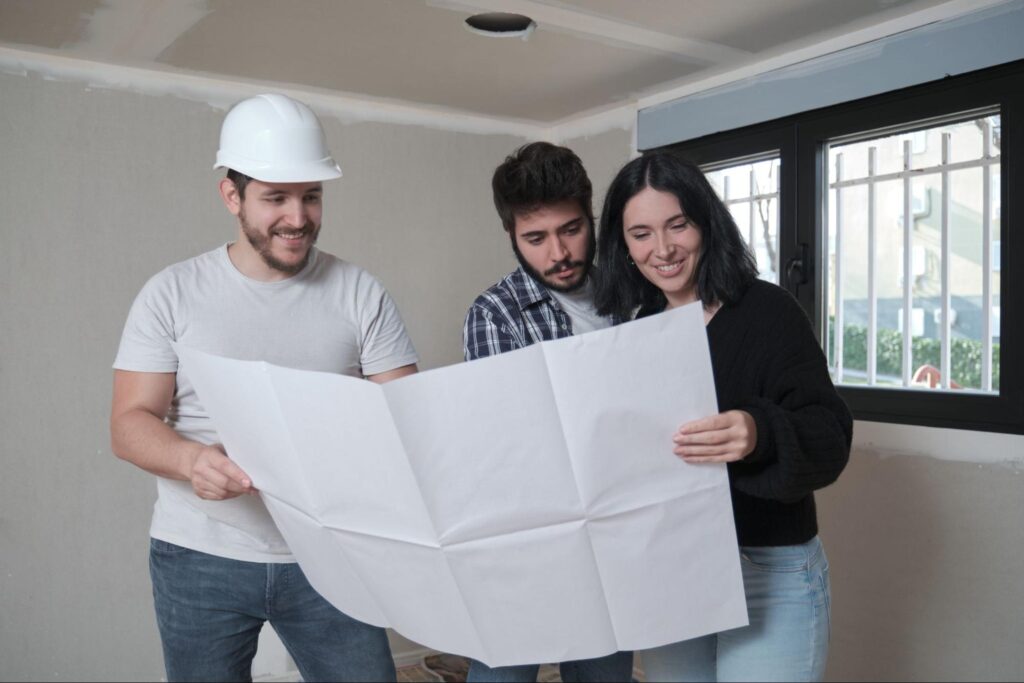
Regular inspections provide an excellent opportunity to confirm your home is constructed as planned. While your builder will manage official inspections from local building authorities, make it a point to be present during significant checkpoints. For example, attending a pre-drywall inspection lets you verify placements for wiring, plumbing, and any special insulation measures—especially crucial in regions of Indiana where temperature fluctuations can be extreme.
Keep a running checklist of concerns or questions. If you spot potential improvements—like rerouting an electrical outlet or adjusting a window height—you’ll have time to address them before the next stage begins. By staying informed, you maintain control over your home-building project, ensuring minimal surprises later on.
Prepare Early for Final Touches and Move-In Day
As construction winds down, details like paint finishes, fixture alignment, and appliance installation come into focus. Schedule a thorough walk-through with your builder to identify any minor imperfections, from unaligned trim to incomplete caulking. In Indiana’s variable climate, it’s also wise to confirm that your heating and cooling systems function efficiently well before you move in.
To streamline the process, create a simple punch list of tasks that must be completed before final payment. Discuss each item with your builder and agree on deadlines. Keep in mind that lead times for certain finishing materials could be longer if they’re in high demand across the state. Being proactive and scheduling tasks early helps you settle into your new home without lingering “to-do” items.
Plan for the Future: Anticipate Challenges, Integrate Technology, and Maintain Your Investment
No matter how carefully you plan, challenges such as supply delays, unexpected weather, or even discovering unsuitable subsoil can surface. Flexibility is crucial. Work with your builder to preemptively discuss backup plans for timeline adjustments or alternative material choices. That way, you’ll focus on solutions rather than obstacles.
Looking ahead, consider integrating smart home technology to boost energy efficiency and convenience. Devices that control lights, thermostats, and security systems remotely not only enhance comfort but also reduce energy consumption—benefits particularly relevant in Indiana’s unpredictable temperature swings. Similarly, sustainable design features like improved insulation, energy-saving windows, and water-efficient plumbing have long-term payoffs.
Once you move in, adopt a maintenance schedule that addresses the wear and tear inherent to Indiana’s four-season climate. Seasonal check-ups on your roof, gutters, and HVAC system can protect your investment and sustain your home’s value.
Over time, you might also revisit your home’s layout. Perhaps you’ll convert a bonus room into a home office, or install solar panels as energy prices shift. By embracing an adaptable mindset, you’ll ensure your home remains relevant and comfortable for years.
Ensuring Your Dream Home Becomes a Reality
Building a home should be an exciting milestone rather than a stressful ordeal. From establishing a practical budget and picking a knowledgeable Indiana builder to customizing thoughtfully and managing each construction phase, your choices lay the groundwork for a rewarding homeownership journey. Staying involved and communicating proactively are crucial steps toward minimizing surprises along the way.
If you’re ready to start building an affordable, high-quality home in Indiana, contact Value Built Homes to discover our home building options and learn how we simplify the process with standardized floor plans.

